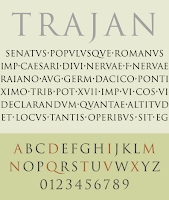Richard Avedon
Richard Avedon was an american fashion and portrait photographer. He first started his photography career in 1944 as an advertising photographer for a department store. In the 1970’s Avedon took many photographs of many rock bands but in 1973 which was the same year Richard Nixon announced the suspension of action in North Vietnam. Avedon took a photograph of Electric Light Orchestra which shows all members of the band exposing their belly buttons for recording, On the Third Day. Avedon was always intrigued in knowing how portraiture captures personality and soul of the subject. Avedon had many famous celebrities as his subjects and captured their portraits with a large-format of 8x10 view camera. His subjects include Marilyn Monroe, Dwight D. Eisenhower, Andy Warhol, Ezra Pound and the Chicago Seven.
Avedon’s portraits are easily distinguished by their minimalist style which is were he has the subject/person looking squarely in the camera and posed in front of a sheer white background. Avedon eliminated the use of props and soft lights because he was able to focus on the subjects emotions and reactions. At times Avedon would evoke reactions from his portraits by guiding them into uncomfortable situations of discussing or asking psychologically probing questions. He would do this to capture the subjects personality and character. This was not typically captured by other photographers at the time. Another thing that distinguishes Richard Avedon’s work is his large prints which sometimes measured over three feet in height. This is said to be an important hallmark in the 20th century portrait photography and by some as Avedon’s magnum opus
In 1974 Richard had serious heart inflammations which hindered his health. This troubling time inspired Avedon to create a collection from a new perspective. In 1979 Richard was commissioned by Mitchell A. Wilder who owns the Amon Carter Museum in Fort Worth, Texas, As it was a six year project,Avedon embarked on in 1979 which was the same year that the Three Mile Island nuclear accident occurred, this was one of the most serious nuclear power plant accident in history. Avedon’s five year project produced 125 portraits of people in the American west who caught Avedon’s eye. All together Avedon and his crew photographed 762 people and exposed approximately 17,000 sheets of 8x10 film.
Wilder envisioned the project to portray Avedon’s take on the American West. It became a turning point for Avedon’s career when he focused on working class subjects such as miners, farmers, housewives and drifters on a larger-than-life print. His mural groupings featured historical figures such as Andy Warhol who was also a very famous photographer.
The American West is one of the Avedon’s most notable works, it has often been criticised for falsifying the West through imaginative themes and for exploiting his subjects.
Most critics question why Avedon a photographer from the East who traditionally focuses on models or public figures would go out to the West to capture on working class members who represent suffering which most of Avedon’s usual models do not show. Critics argue that Avedon's intentions are to evoke and influence condescending emotions from the audience which he is mostly known for doing to his subjects when shooting his subjects.





















